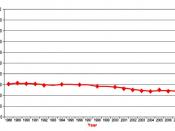Introduction3Physical activity and exercise in old people7Definition5Different types of exercise6Positive effects of exercise on old people8Negative effects of exercise in old people9Barriers to exercise in old people10Health related quality of life11Definition 11Conceptualization of HRQL outcomes12Measurement of quality of life13Review of the literature17Exercise and physical functioning domains17Edercise and well-being28Conclusion 29References31IntroductionLife expectancy is prolonged in all populations worldwide (Allison & Keller, 1997; Timiras, 1994); and therefore, world's populations are ageing (Resnick, 2003). Thus, individuals live longer and so a larger proportion may face with disabilities and terminal dependency (Larson, 1988; Thomas, 2001), inactivity (King, 2001), and chronic conditions (Allison & Keller, 1997.
Older adults reduce their activity levels as they age, and larger proportions are sedentary (King, 2001; King, Rejeski, & Buchner, 1998; Thomas, 2001; Wagner, LaCorix, Buchner, & Larson, 1992; Westerterp & Meijer, 2001). For example, two out of five adults 65 years old or more report a sedentary lifestyle, therefore increasing their death risk by 5-6% (Boyette et al.,
2002). Physical inactivity is one of the key behavioral risk factors for old people (Department of Health and Ageing, 2002; DiPietro, 2001), because inactivity can accelerates the onset of disability and death in old people (Wagner et al., 1992).
A long period of life later 65, there are some changes in a number of physiological parameters (Westerterp & Meijer, 2001) which causes increases the risk of sequelae of chronic and debilitating conditions (Allison & Keller, 1997; Ory, Cox, Gift, & Abeles, 1994). For example 88% of old people over age 65 have at least one chronic health condition (Hoffman, 1996 cited in (King et al., 1998), and many of old people suffer from impaired functioning and well-being (Dawson 1987 cited in (King et al., 1998), which may cause higher morbidity and mortality rate (Allison & Keller, 1997). Chronic conditions are usually...


